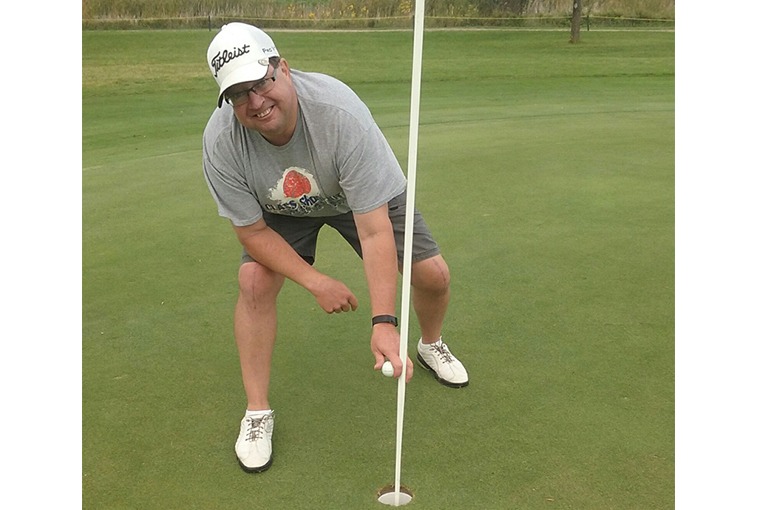Knee replacement surgery wasn’t in Brian Weber’s plans. But after so many years on his feet, it was time to find relief from his chronic knee pain.
With 30 years at the McCook County Highway Department, Weber has clocked a lot of miles on his feet. When combined with his golf habit and second job as a referee for high school football and basketball, Weber’s knees paid the price.
“My knees basically just hurt most of the time,” Weber recalls. “Whether I was working, refereeing or golfing, I almost always felt pain.”
First small steps
Weber, a Bridgewater, South Dakota, native, began his journey to pain-free knees several years ago with Brian Aamlid, M.D., orthopedic surgeon at Sanford Orthopedics and Sports Medicine. He initially had surgery to repair the torn meniscus in both of his knees.
The meniscus are two wedge-shaped pieces of cartilage that serve as shock absorbers. They help cushion the knee joint and keep it stable.
“That surgery helped for a while, but all the years on my feet for work and as a referee was tough on my knees,” Weber recalls. “I was asked to referee at a state tournament, which is a huge honor. In order to get through the tournament, I had to use steroid injections to help with my knee pain.”
Second time’s a charm
Weber didn’t want to have to continue to deal with the knee pain and just simply “get by” anymore. In June 2017, he decided to have total knee replacement surgery on both of his knees.
Once again, he returned to Dr. Aamlid for the procedure.
“I never thought at 57 I would need knee replacement surgery, but I was tired of dealing with the pain,” Weber says. “I was ready for a change.”
According to the American Academy of Orthopaedic Surgeons, there are no specific age or weight restrictions for total knee replacement surgery. Recommendations are based on a patient’s pain and disability, not age.
Weber’s surgery was a success, and he spent approximately three months recovering before returning to work full time. His recovery included physical therapy –- an essential part of rehabilitation –- right in Bridgewater.
“I was glad to be able to keep my physical therapy with Sanford, and have it right in my hometown,” Weber says. “My physical therapist did an amazing job.”
Back to a better life
Now with two new knees, Weber is back to enjoying his life without knee pain.
“It’s so nice to not limp anymore,” he says. “I’m back at work and finishing up some DIY projects at the house. I can easily climb up and down ladders with no pain.”
He even made a first-time accomplishment when he returned to the golf course.
“My very first time back on the course and I got my first hole-in-one,” he says. “I told Dr. Aamlid that he not only fixed my knees, but he also improved my golf game. I can’t say enough good things about Dr. Aamlid and the entire team at Sanford.”
What would Weber say to others who may be struggling with knee pain or considering surgery?
“Don’t think your only option is to simply live with the pain,” he advises. “If your pain is keeping you from living your life, go get help. I have never regretted my knee replacement surgery for one minute.”
Check out related articles:
- Knee replacement gives retired military vet new mobility
- Robotic-assisted surgery is option in hip and knee procedures
…
Posted In Health Information, Orthopedics
